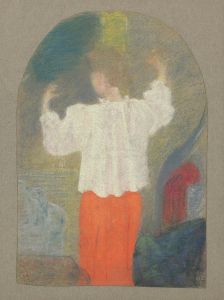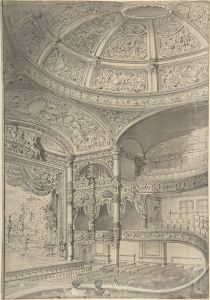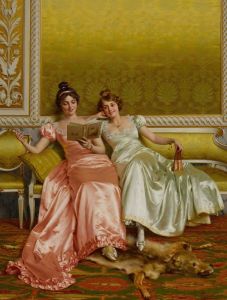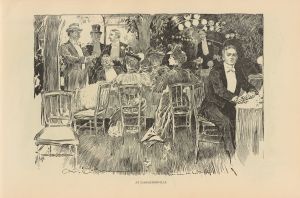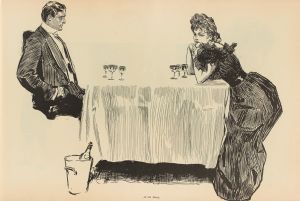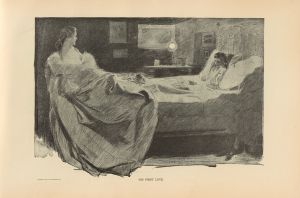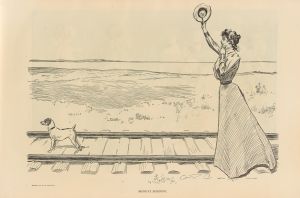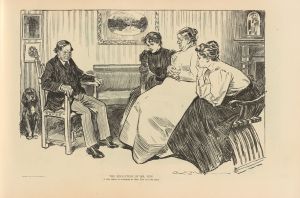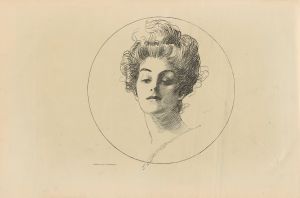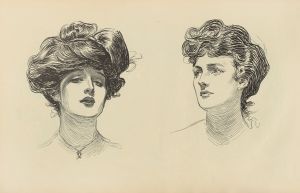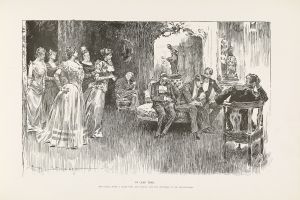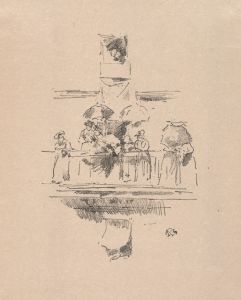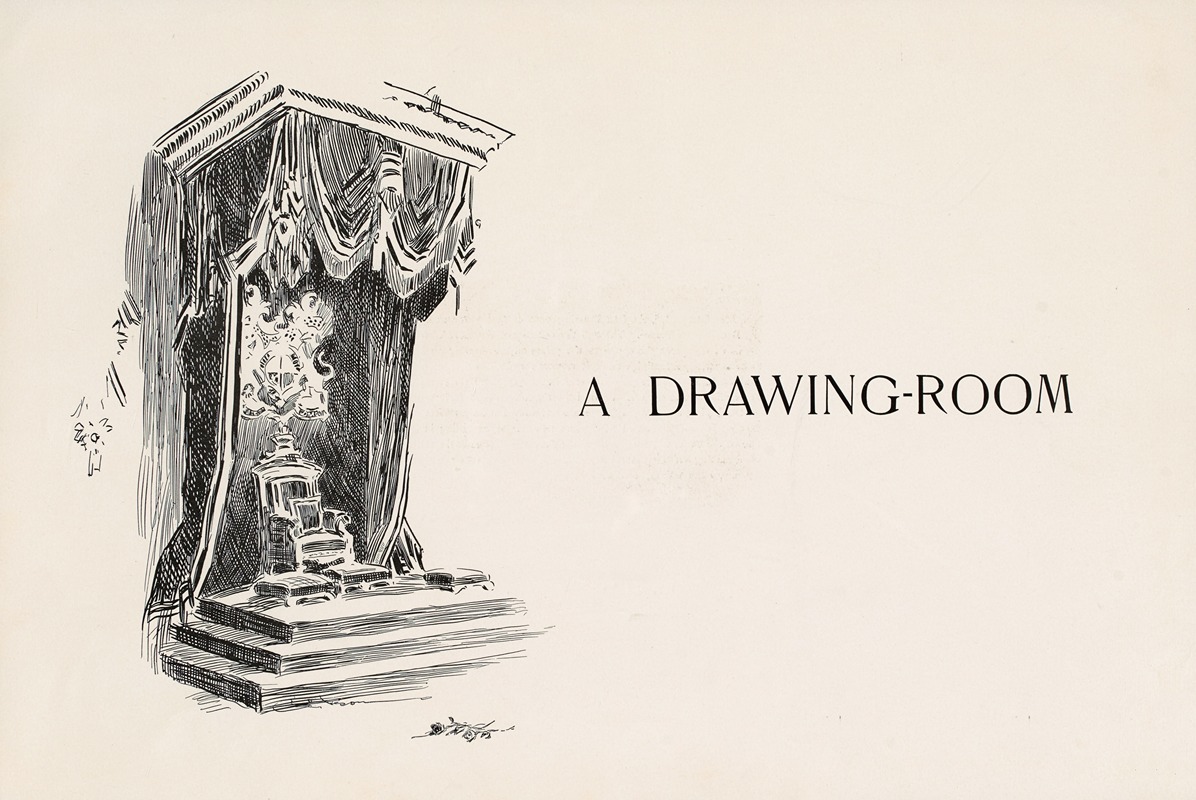
A Drawing Room
A hand-painted replica of Charles Dana Gibson’s masterpiece A Drawing Room, meticulously crafted by professional artists to capture the true essence of the original. Each piece is created with museum-quality canvas and rare mineral pigments, carefully painted by experienced artists with delicate brushstrokes and rich, layered colors to perfectly recreate the texture of the original artwork. Unlike machine-printed reproductions, this hand-painted version brings the painting to life, infused with the artist’s emotions and skill in every stroke. Whether for personal collection or home decoration, it instantly elevates the artistic atmosphere of any space.
Charles Dana Gibson was an influential American illustrator, best known for his creation of the "Gibson Girl," a representation of the idealized American woman at the turn of the 20th century. One of his notable works is "A Drawing Room," which exemplifies his skill in capturing the social dynamics and fashion of his time through detailed pen-and-ink illustrations.
"A Drawing Room" is a black-and-white illustration that showcases Gibson's ability to depict the nuances of upper-class society. The drawing typically features a group of elegantly dressed men and women gathered in a sophisticated setting, likely a parlor or drawing room, which was a common social space in affluent homes during the late 19th and early 20th centuries. This setting allowed Gibson to explore themes of social interaction, gender roles, and the subtleties of human expression and posture.
Gibson's work is characterized by its attention to detail and the expressive quality of his line work. In "A Drawing Room," he captures the intricate details of the period's fashion, from the women's elaborate gowns to the men's tailored suits. The characters in the illustration often engage in conversation or display body language that suggests a narrative, inviting viewers to imagine the social dynamics at play.
The "Gibson Girl" aesthetic, which is evident in "A Drawing Room," was a significant cultural phenomenon. It represented a new standard of beauty and femininity, characterized by an independent yet elegant demeanor. The women in Gibson's illustrations were often depicted as confident and poised, reflecting the changing roles of women in society during that era. This was a time when women were beginning to assert more independence and seek greater opportunities outside the traditional domestic sphere.
Gibson's illustrations, including "A Drawing Room," were widely published in popular magazines such as Life, Harper's Weekly, and Scribner's, reaching a broad audience and influencing public perceptions of style and social norms. His work not only entertained but also subtly commented on the societal changes occurring in America at the time.
"A Drawing Room" is a testament to Gibson's talent in capturing the essence of an era through his art. His illustrations remain a valuable resource for understanding the cultural and social history of the United States during the late 19th and early 20th centuries. Through his keen observation and artistic skill, Gibson provided a window into the lives and aspirations of the people of his time, making his work an enduring part of American art history.





